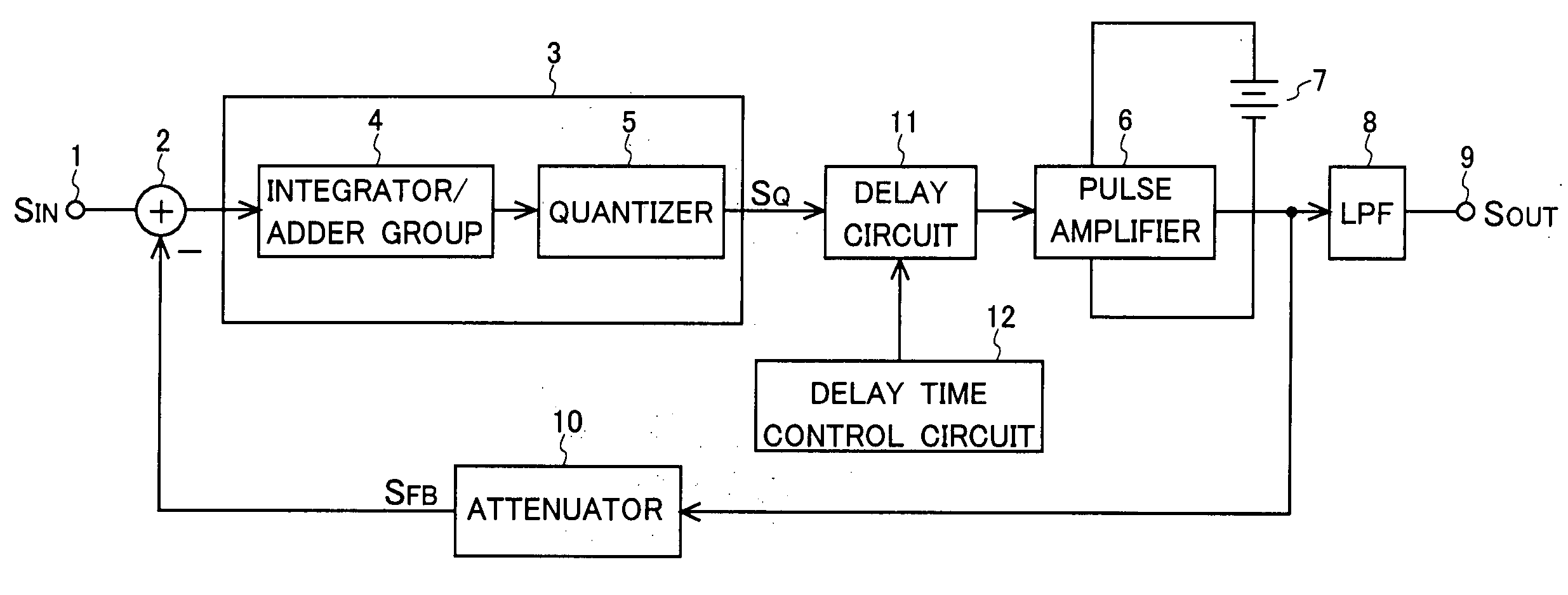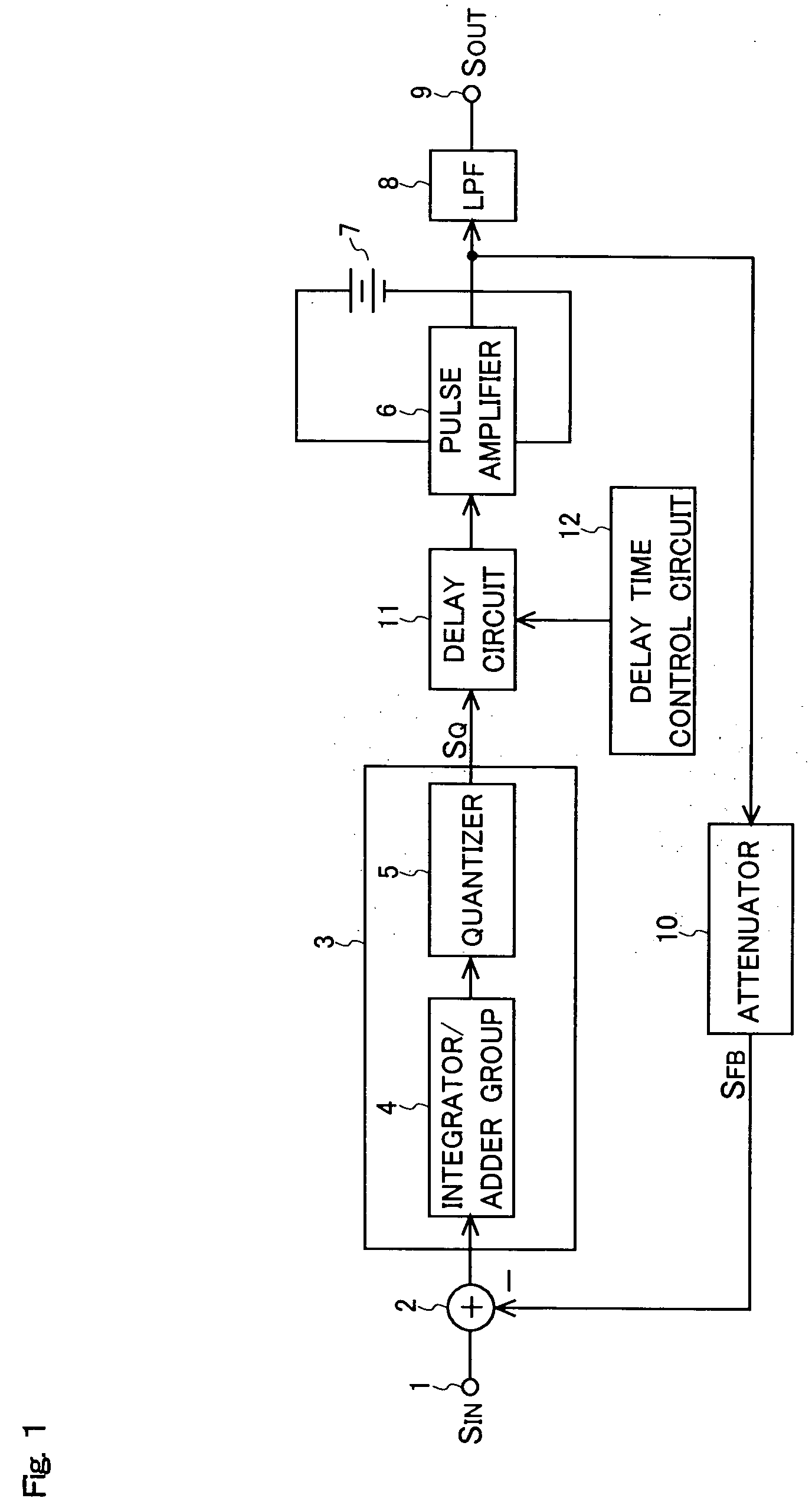Switching amplifier
a switching amplifier and amplifier technology, applied in the field of switching amplifiers, can solve the problems of reducing the signal-to-noise ratio of the audio frequency range with respect to which the analog audio signal is processed, reducing the power efficiency of the switching amplifier, and increasing the radiated noise. the effect of reducing the delay time and simple circuit design
- Summary
- Abstract
- Description
- Claims
- Application Information
AI Technical Summary
Benefits of technology
Problems solved by technology
Method used
Image
Examples
Embodiment Construction
[0033] Hereinafter, embodiments of the present invention will be described with reference to the accompanying drawings. An example of the electrical configuration of a switching amplifier according to the present invention is shown in FIG. 1. In FIG. 1, such parts as are found also in FIG. 7 are identified with common reference numerals and symbols.
[0034] The switching amplifier shown in FIG. 1 is a switching amplifier that performs power amplification by using a one-bit signal obtained by delta-sigma modulation, and includes: an input terminal 1; an adder 2; a delta-sigma modulation circuit 3; a pulse amplifier 6 to which a constant voltage is applied from a constant voltage source 7; a low-pass filter 8; an output terminal 9; an attenuator 10; a delay circuit 11; and a delay time control circuit 12. The delta-sigma modulation circuit 3 includes: an integrator / adder group 4 including a plurality of cascade-connected integrators that integrate one input signal after another and an ...
PUM
 Login to View More
Login to View More Abstract
Description
Claims
Application Information
 Login to View More
Login to View More - R&D
- Intellectual Property
- Life Sciences
- Materials
- Tech Scout
- Unparalleled Data Quality
- Higher Quality Content
- 60% Fewer Hallucinations
Browse by: Latest US Patents, China's latest patents, Technical Efficacy Thesaurus, Application Domain, Technology Topic, Popular Technical Reports.
© 2025 PatSnap. All rights reserved.Legal|Privacy policy|Modern Slavery Act Transparency Statement|Sitemap|About US| Contact US: help@patsnap.com



